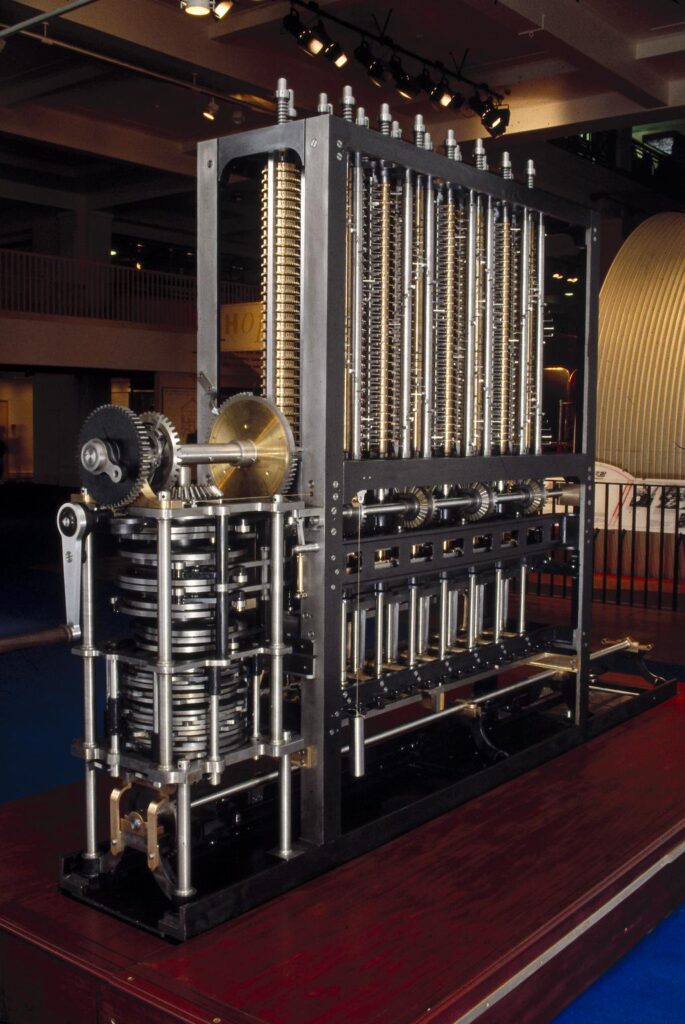Perhaps what is most interesting about the Jacquard loom was its afterlife. When computer pioneer Charles Babbage, a British mathematician, envisioned an “analytical engine” in 1837 that would essentially become the first general-purpose computer, he decided that the computer’s input would be stored on punch cards, modeled after Jacquard’s system. Although Babbage never built his engine, he and his work were well known to the mathematics community and eventually influenced the field that came to be computer science.
In 1821 Babbage invented the Difference Engine to compile mathematical tables. On completing it in 1832, he conceived the idea of a better machine that could perform not just one mathematical task but any kind of calculation. This was the Analytical Engine (1856), which was intended as a general symbol manipulator, and had some of the characteristics of today’s computers.
Unfortunately, little remains of Babbage’s prototype computing machines. Critical tolerances required by his machines exceeded the level of technology available at the time. George Scheutz, a Swedish printer, successfully constructed a machine based on the designs for Babbage’s Difference Engine in 1854. This machine printed mathematical, astronomical and actuarial tables with unprecedented accuracy, and was used by the British and American governments.
In 1985, the Science Museum in London began construction of the Difference Engine No. 2 using Babbage’s original designs. The calculating device was completed and working by 1991. The device consists of 4000 parts and weighs over three metric tons. The printer for the Difference Engine No. 2 was completed nine years later, in 2000. It has 4000 parts and weighs 2.5 metric tons. (Source)

In the mid-1880s, Herman Hollerith, who worked as a statistician for the 1880 census, seized on the idea of punch cards, designing a machine that used the location of holes on each card to tally not only overall numbers but also individual characteristics and even cross-tabulations (see next page for more).


